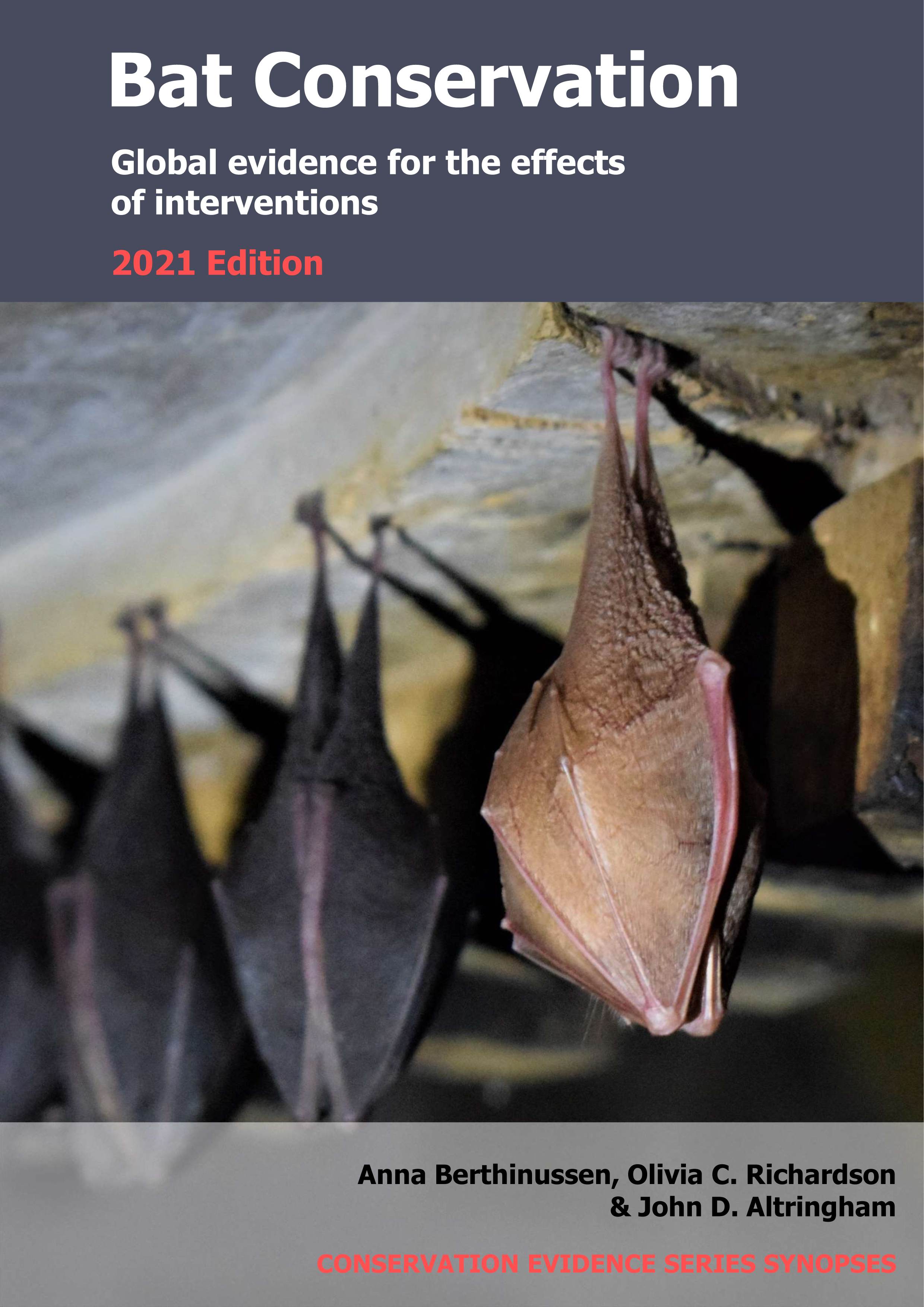Provide alternative bat roosts during maintenance work at road/railway bridges and culverts
-
Overall effectiveness category Unknown effectiveness (limited evidence)
-
Number of studies: 1
View assessment score
Hide assessment score
How is the evidence assessed?
-
Effectiveness
20% -
Certainty
22% -
Harms
0%
Study locations
Supporting evidence from individual studies
A review in 2017–2018 of case studies at four road bridges in California, USA (Harvey & Associates 2019) found that bat houses provided as alternative roosts during bridge replacement works were used by fewer bats than the original roost or were not used at all. At one site, seven bat houses built to replace a roost for four years during bridge replacement works were used by fewer Mexican free-tailed bats Tadarida brasiliensis (2,000 bats) than the original roost (40,000 bats). At three other sites, bat houses built to replace roosts used by pallid bats Antrozous pallidus (18 bats), Yuma myotis bats Myotis yumanensis (40–100 bats), and/or Mexican free-tailed bats (994 bats) during bridge replacement works were not used at all. At all four sites, bat houses (or ‘condominiums’) were built as temporary roosts while bats were excluded from their original roosts during bridge replacement works (dates not reported). Counts of bats before and after the works were taken from questionnaires completed by the California Department of Transportation.
Study and other actions tested
Where has this evidence come from?
List of journals searched by synopsis
All the journals searched for all synopses
This Action forms part of the Action Synopsis:
Bat Conservation
Bat Conservation - Published 2021
Update 2020





)_2023.JPG)














